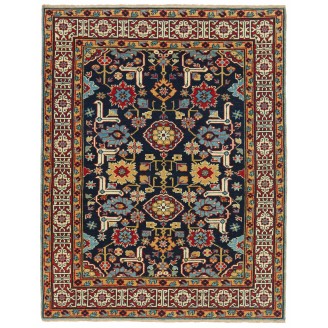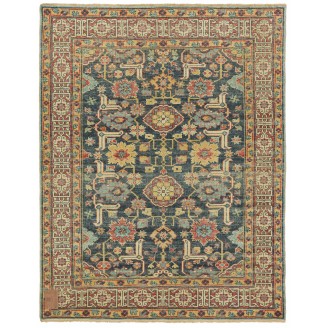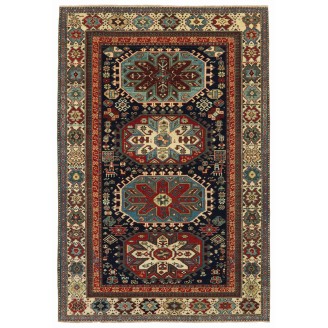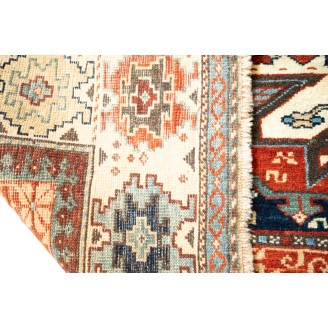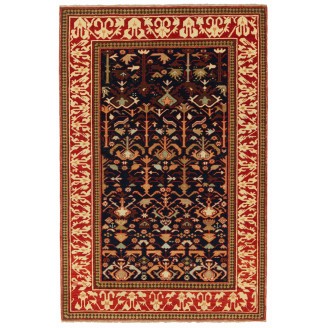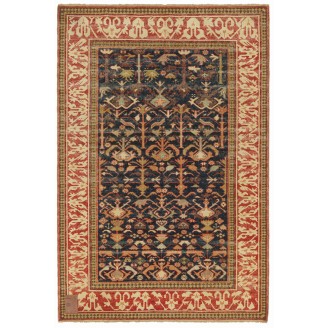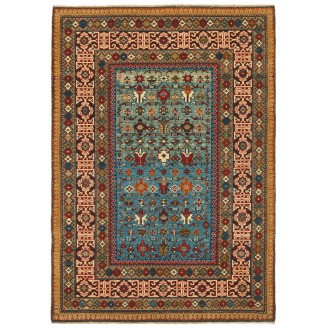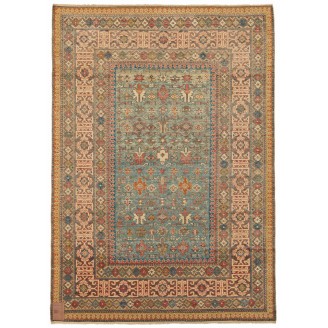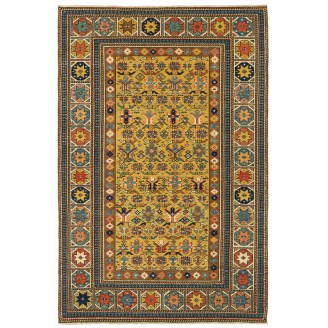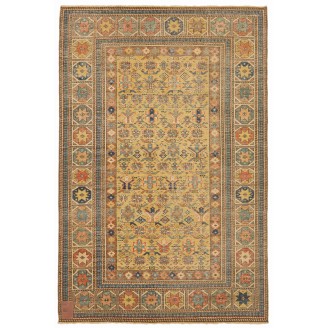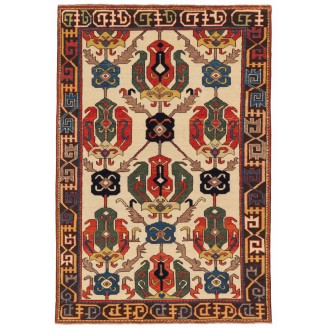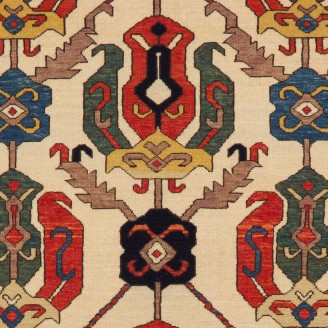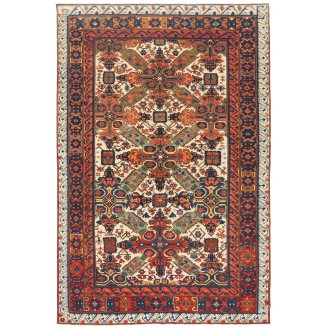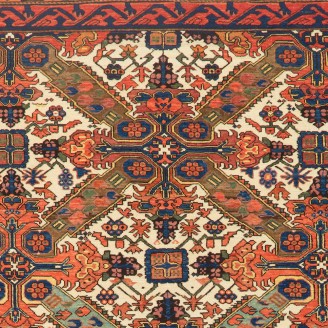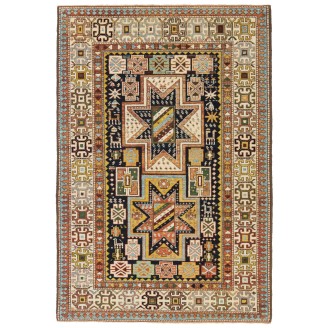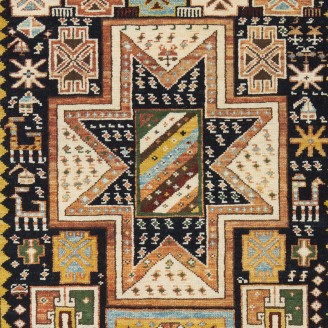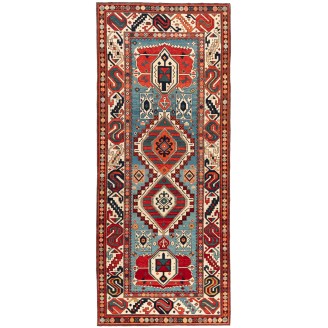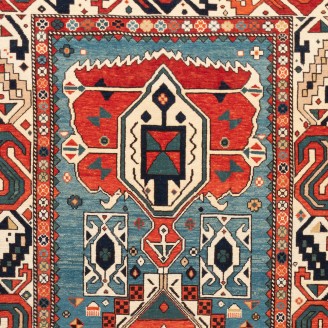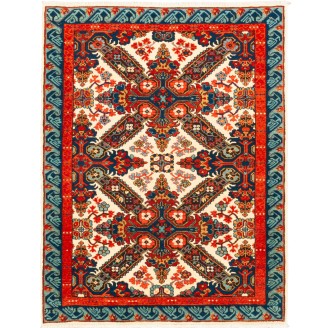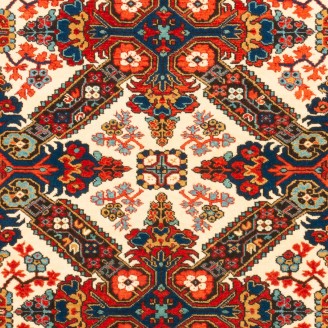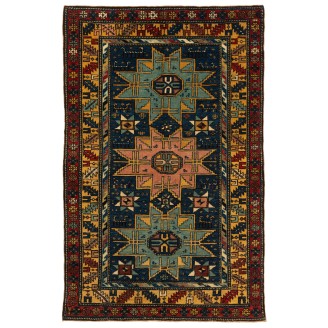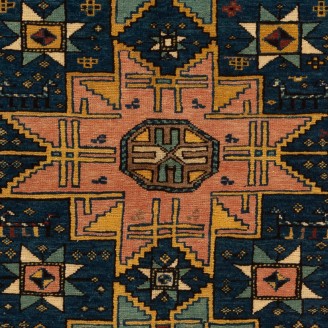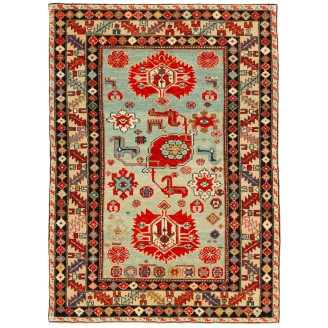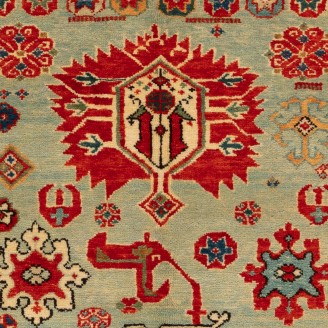The Shirvan district is a loosely defined region south of the Greater Caucasus and east of the Gendje weaving areas. It includes the Apsheron Peninsula, where Baku is located, and its inhabitants are almost entirely Azeri Turks, with small groups of Armenians and Tats. Situated within it are several towns, which, according to Kerimov and Schürmann, have become associated with particular designs; these include Bidjov, Marasali, Khila, Surahani, Baku, and Saliani. Many authors also include Chajli and Akstafa rugs, although we have included the former with Gendje pieces, and the latter have been treated as a separate sub-group.
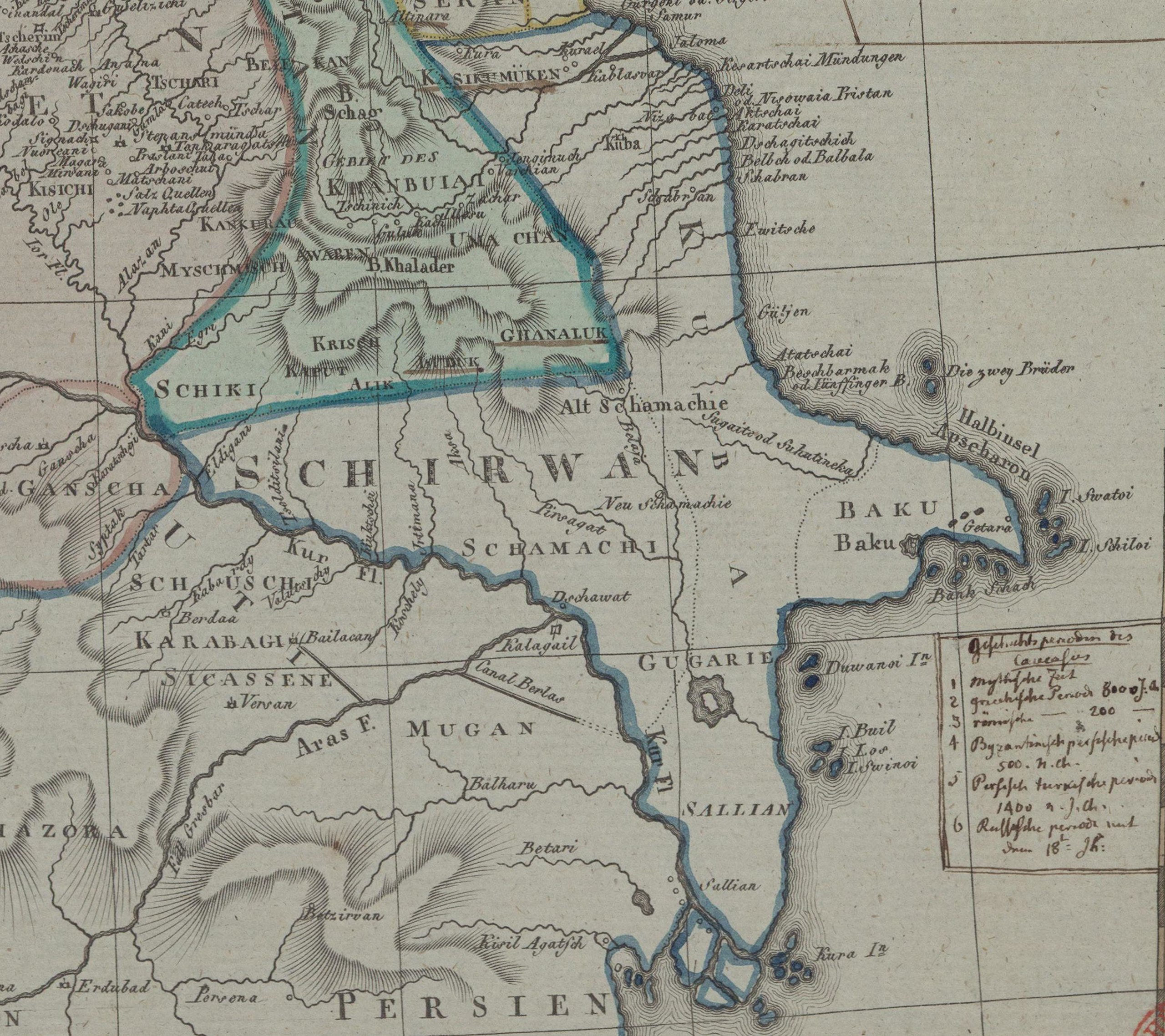 Shirvan from map of the Caucasus by Johann Christoph Matthias Reinecke. 1804
Shirvan from map of the Caucasus by Johann Christoph Matthias Reinecke. 1804
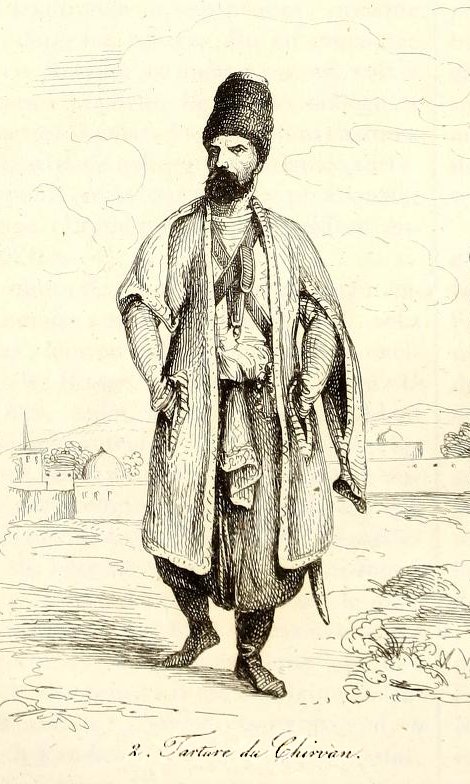
Shirvan Tatar (i.e. Azerbaijani). Engraving from book of Jean Baptiste Benoît Eyriès. Voyage pittoresque en Asie et en Afrique, 1839
Shirvan ( also spelled as Sharvān, Shirwan, Shervan, Sherwan, Chirvan, Šervān, and Şirvan ) is a historical Iranian region in the eastern Caucasus, known by this name in both pre-Islamic Sasanian and Islamic times. Today, the area is an industrially and agriculturally developed part of the Azerbaijan Republic that stretches between the western shores of the Caspian Sea and the Kura River, centered on the Shirvan Plain.
Shirvanshah, also spelled as Shīrwān Shāh or Sharwān Shāh, was the title in medieval Islamic times of a Persianized dynasty of Arabic origin. They ruled the area independently or as a vassal of larger empires from 809 A.D. to 1607 A.D. when Safavid rule was firmly established. When the Shirvanshah Shah dynasty was ended by the Safavid Shah Tahmasp I, Shirwan formed a province of the Safavids and was usually governed by a Khan, often called Beylerbey.
Shirvan was taken by the Ottomans in 1578; however, Safavid rule was restored in 1607. In 1722, during the Russo-Persian War (1722–1723), the Khan of Quba, Husayn Ali, submitted to Peter the Great and was accepted as his dignitary. The Treaty of Saint Petersburg (1723) forced the Iranian king to recognize the Russian annexation. By the treaty between the Russian and Ottoman Empires in 1724, the coast of the territory of Baku, which the Russians occupied, was separated from the rest of Shirvan, which was left to the Ottomans. It was only when Nader Shah defeated the Ottomans (1735) that the Russians ceded back the coastal land and the other areas in the North and South Caucasus as conquered in 1722–1723 from Safavid Iran conform the Treaties of Resht and Ganja, and the area became part of the Afsharid Empire. By that century, long Iranian rule was restored. The term Shirvani/Shirvanli is still in use in Azerbaijan to designate the people of the Shirvan region, as it was historically. In ancient times, the bulk of the population of Shirvan was Caucasian-speaking groups. Later on, the Iranization of this native population and subsequent Turkification since the Seljuq era occurred. The bulk of the population today are Turkic-speaking Azerbaijanis, although there are also smaller Caucasian-speaking and Iranian-speaking minorities.
In design, there is little to distinguish the Shirvan from other finely woven Caucasian rugs, as one finds everything from medallions to designs made up of small repeating figures; older Shirvans tend to be more floral than rigidly geometric. Generally, the effect could be bolder than in the Kazak, and some rugs show a Persian influence. Most Shirvans are of prayer rug size, but we also have runners and a few rugs up to about 5 x 12 feet. The colors are more subdued than in Gendjes or Kazaks, with more use of blue and ivory.
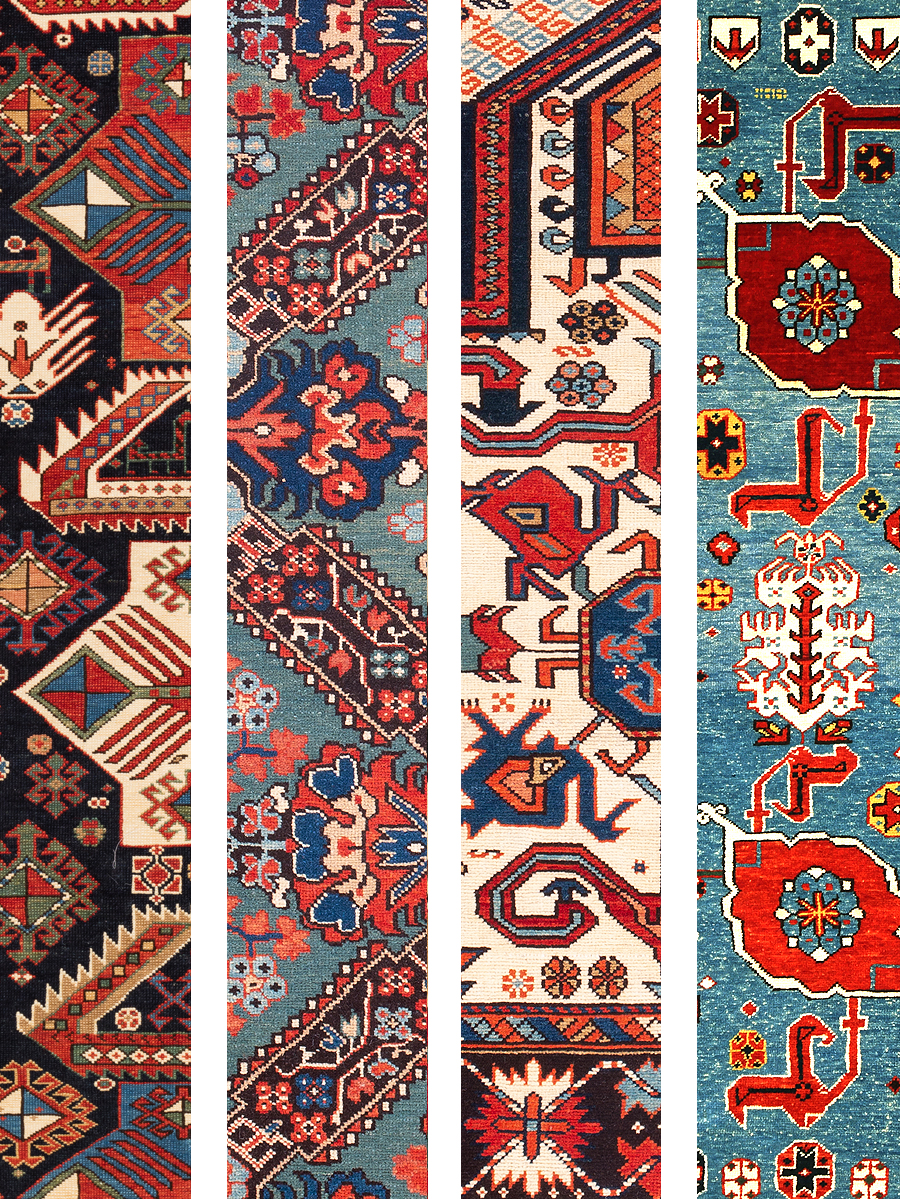 Shirvan Patterns
Shirvan PatternsShirvan rugs are often constructed on a warp of brown strands twisted with white. The wefts are usually white wool, but some later specimens are cotton. One end is fringed, and the other shows loops, often woven into a selvage, while the sides are almost always double overcast in white or blue wool or cotton. The knotting is relatively fine, and the pile is much shorter than in the Kazak, Gendje, or Karabagh. Rugs of nineteenth-century Shirvân typically have about 113 symmetric knots per square inch. Their area averages about 28 square feet. They are wool warped and may have cotton wool wefts. Many of these rugs are woven in the prayer design with a lattice or rows of stylized flowers or blossoms occupying the field. Design types are Afshan, Akstafa, Bijov, Chajli and Marasali.
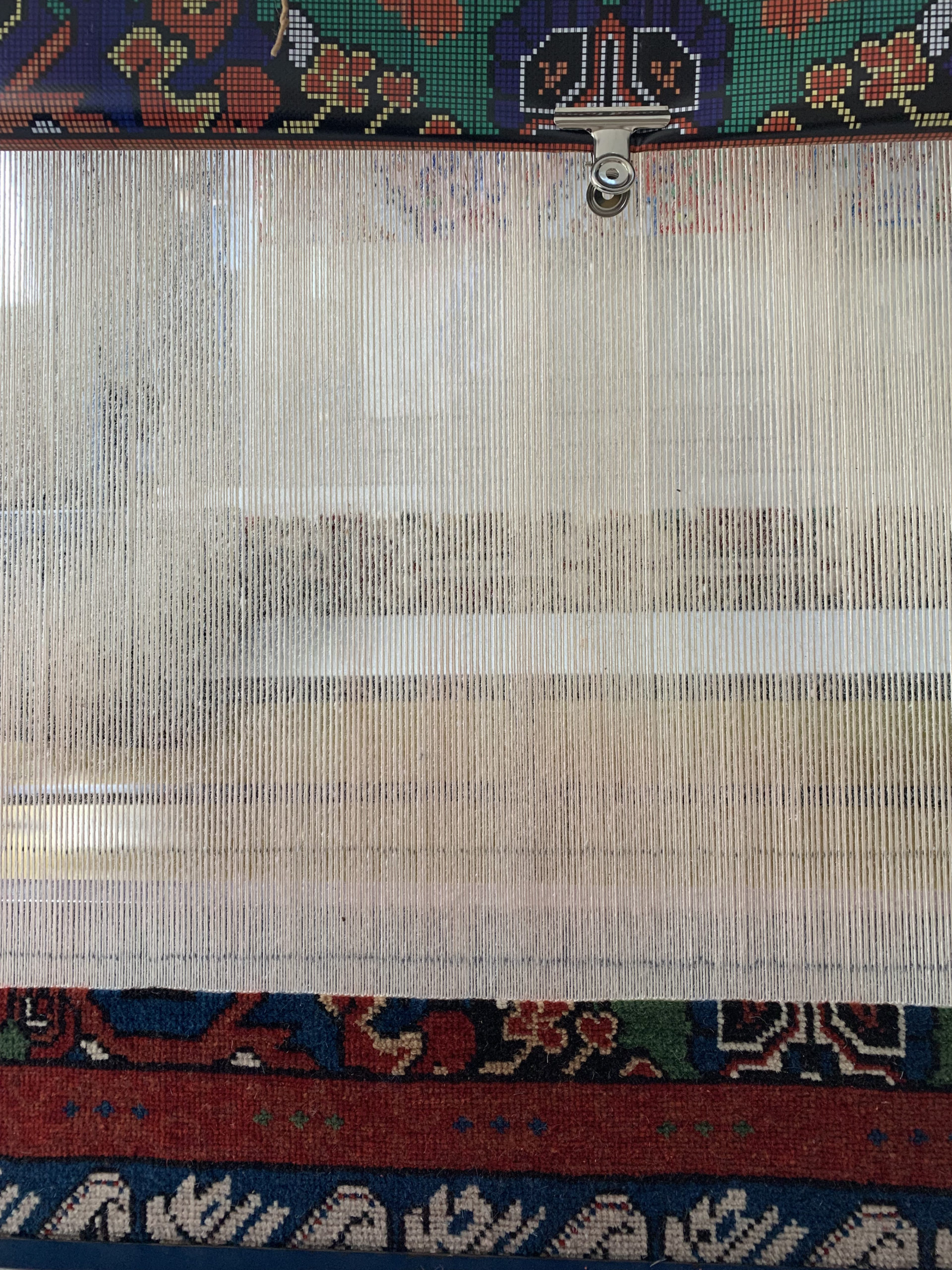 Photo: Shirvan Rug Weaving, 2019 Harran
Photo: Shirvan Rug Weaving, 2019 Harran
